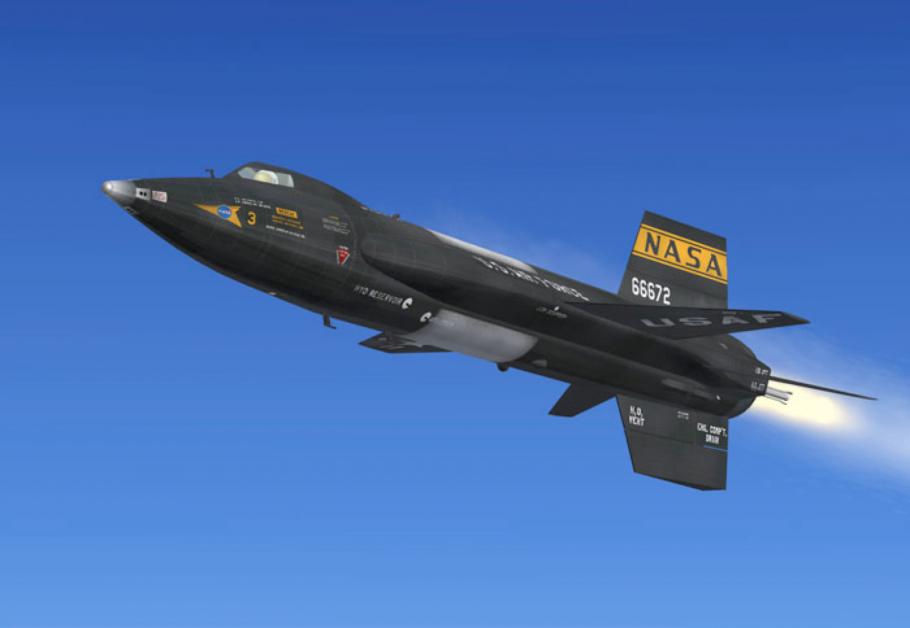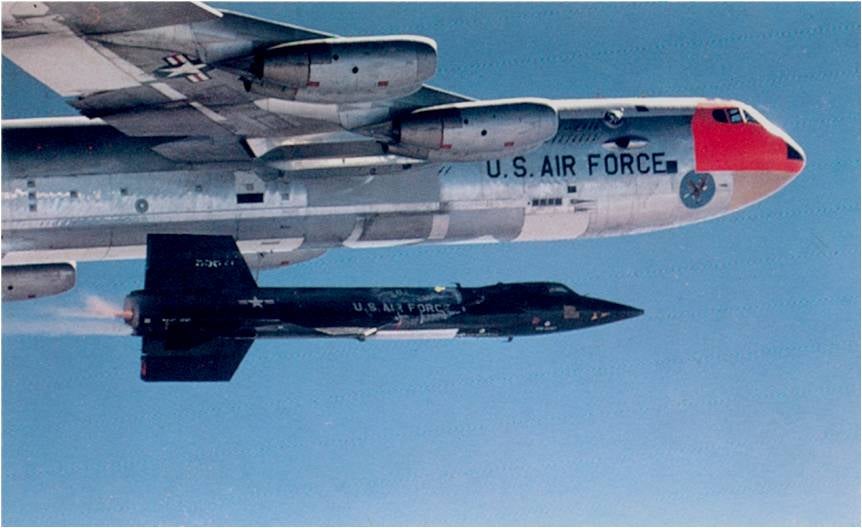The X-15: Breaking Speed Barriers and Reaching for the Stars
The X-15, a remarkable hypersonic rocket aircraft, represents an iconic milestone in the history of aerospace engineering. Designed and constructed by North American for NACA (later NASA) testing, this groundbreaking project set speed records in the 1960s that have remained unbroken for over six decades. The X-15 was an audacious endeavor that yielded invaluable data, subsequently shaping the design of future aircraft.
Maximum Speed
As early as the late 1940s, aviation visionaries harbored dreams of achieving speeds far beyond the sound barrier. The Douglas X-3 Stiletto was among the earliest contenders, designed to soar at twice the speed of sound—an awe-inspiring feat for the early 1950s. However, in December 1954, the quest for innovation led to the establishment of new specifications, including testing a new engine type, achieving Mach 5+ flight, and reaching altitudes previously unexplored by aircraft.
Yet, during this era, conventional jet engines struggled to propel even small and lightweight aircraft beyond Mach 2. In simplified terms, a turbojet engine functions by ingesting air, mixing it with fuel, and generating thrust, with optimal performance contingent on specific altitudes.
Douglas X-3 Stiletto – The Flying Shoe
Another critical factor influencing top speed is drag, or air resistance. As an object accelerates, the air exerts greater pressure to impede its progress—a sensation akin to sticking your hand out of a moving car window. Consequently, modern jet fighters operating at low altitudes cannot approach their claimed top speeds due to this resistance.
However, at higher altitudes, the atmosphere thins, facilitating smoother travel with reduced resistance. Paradoxically, jet engines rely on atmospheric air to generate thrust. Flying too high can significantly compromise engine performance.
To overcome this limitation, rocket motors emerged as a straightforward solution. These motors burn fuel without relying on atmospheric air, as the essential oxygen is carried separately in liquid form. This design allows for higher altitudes and subsequently, higher top speeds.
Pioneering Rocket-Powered Aircraft
The German Heinkel He-176 was the first rocket-powered aircraft, but the Messerschmitt Me-163 Komet is better recognized. Even in 1944, the Komet achieved speeds of 620 mph in level flight, and unofficially, it reached 700 mph in testing—an accomplishment unsurpassed until 1953.
Post-World War II, the search for technological advancements led to significant interest in rocket-powered aircraft, seen as potential assets in future conflicts.
The Birth of the X-15
In 1955, North American was awarded the contract to design the X-15’s airframe, while Reaction Motors was tasked with building the engines. Merely four years later, in June 1959, the X-15 embarked on its maiden flight.
Unlike traditional aircraft, the X-15 was never intended for independent takeoff. Similar to other experimental aircraft like the M2-F3 Lifting Body, it was designed to be carried aloft by a “mothership.”
NACA/NASA employed an older model B-52A, retired in 1969, and a B-52B, both modified with a pylon on the right wing for test vehicle transport. These were designated NB-52A “The High and Mighty One” and NB-52B “Balls 8.”
Design Challenges and Compact Design
One crucial consideration during the design phase was ensuring that the X-15 could fit beneath the wing of a B-52, necessitating a relatively compact design. The X-15 accommodated only a single crew member and boasted an overall length of 50 feet 9 inches and a wingspan of 22 feet 4 inches.
The X-15, with its sleek profile, was purpose-built to reach hypersonic speeds, making it a formidable performance machine. Hypersonic speeds are defined as anything exceeding 3,836 mph, and the X-15 aimed to break through this barrier.
Three X-15s were constructed—designated X-15-1, -2, and -3—and each embarked on numerous flights. X-15-1 conducted a total of 81 flights, while X-15-2 completed 53.
Tragic Incidents and Rocket Power
Regrettably, X-15-3 met a tragic end during its 65th test flight in 1967. While descending at hypersonic speeds, the aircraft went into a spin and disintegrated, scattering wreckage across a 50-square-mile area. The pilot, Michael Adams, lost his life in the accident. Another accident occurred when X-15-2 crashed upon landing in 1962, causing significant damage to the aircraft. After extensive repairs, it was modified to carry liquid hydrogen, extended by 2.4 feet, and equipped with auxiliary fuel tanks for increased range.
The X-15’s power plant played a pivotal role in its initial design, built around two XLR11 rocket motors and the necessary fuel tanks for propelling it to the edge of space. Every facet of the X-15’s design was geared toward making it the fastest and highest-flying aircraft ever.
The X-15’s power plant played a pivotal role in its initial design, built around two XLR11 rocket motors and the necessary fuel tanks for propelling it to the edge of space. Every facet of the X-15’s design was geared toward making it the fastest and highest-flying aircraft ever.
Despite its seemingly extravagant fuel consumption, the X-15 achieved astonishing world records, some of which remain unbeaten to this day.
In conclusion, the X-15 stands as a testament to human ingenuity and determination, pushing the boundaries of aerospace technology while providing a wealth of knowledge that continues to shape the future of aviation and space exploration. Its legacy endures as a symbol of mankind’s unwavering pursuit of speed, altitude, and scientific discovery.












